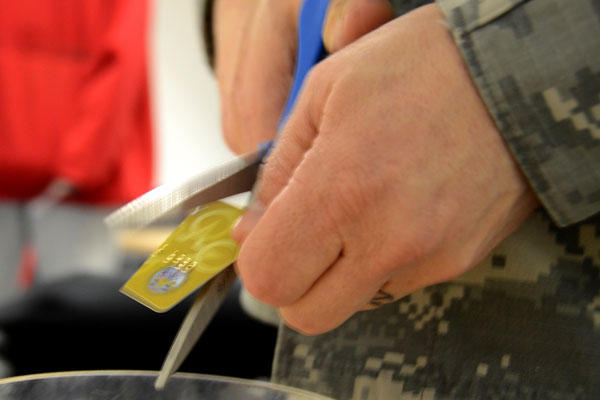This content is provided courtesy of SavvyMoney.
Disorganization Costs Money!
Simply put, not being on top of your financial game isn’t just sloppy, but expensive. Here are a few things to consider: Penalty fees: Late payments, over limit fees, and phone payments can cost up to $30 each. Interest rates: One missed payment can increase your APR from 15% to nearly 30%! Impact on your credit score: 35% of your credit score is determined by how consistently you make your payments. Missing a few payments can drop your score by as much as 50 points. This score variation could affect your eligibility into the military. Get Organized One of the simple truths of finance is that, in order to make progress, you need to understand where you are at any point in time and what direction you’re heading. Consider this scenario: You have a friend who has set a goal to get out of debt and decided to play the balance transfer game to lower her costs so she could pay it off more quickly. However, when she looked at her situation after a year, she found her financial condition had actually worsened… considerably. Her family went from 11 cards and $110K in debt to 16 cards and $130K in debt. Because she was making her situation more complicated, she and her husband were unable to see what was really happening. Our human mind has limited ability to manage more than 5 things at a time. For most of us, it’s simply too difficult to mentally track many different accounts with different due dates so we lose track of where we’re headed. To really make progress paying off debt, you need a system for success. Follow these steps: 1. Set up files for each debt account and gather all your latest statements. File each statement every month so you have a record. Print out electronic statements. 2. Set up a summary spreadsheet or paper system for tracking your debts. Create columns for the following fields: balance, APR, payment date, minimum payment, amount paid, and expiration date of any intro APRs. Try using SavvyMoney’s debt-tracking-form to help you get set up. 3. Consolidate your spending into one account. Don’t worry too much about “budgeting”—just shift your spending over to a debit-linked checking account and make sure to not over-spend from this account. 4. Know your cash flow. Know how your outbound debt payment cycle compares to your inbound cash flow. At SavvyMoney, we believe that having good visibility to what’s happening with your finances is over half the battle. Having a well-organized system dramatically increases your chances for success. Next, you’ll learn the specifics of credit and how to stop spending on credit. Brought to you by SavvyMoney.com, the leading online debt payoff program.












